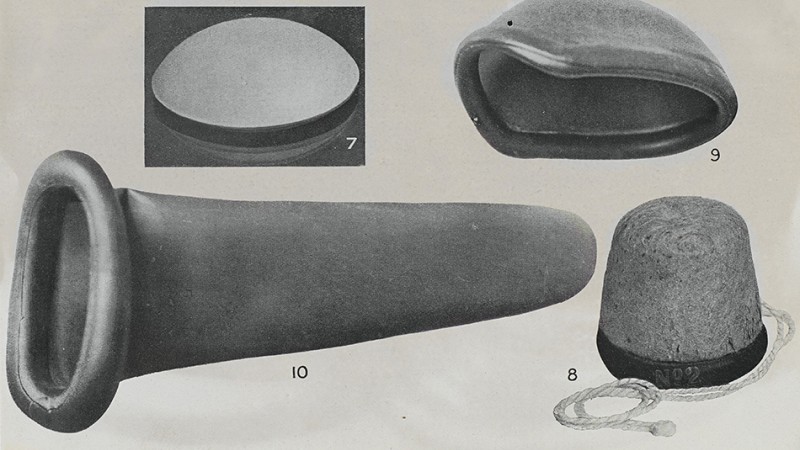Though the female condom was positioned as an utterly novel product when it was introduced in the 1990s, similar devices briefly appeared on the market in the early 20th century.
In her 1923 book Contraception, scientist and family planning pioneer Marie Stopes included “large internal sheaths for the vagina” in her list of available contraceptive technologies. “In theory they resemble the condom, being merely in one way a reversed condom applied as a lining for the vagina instead of a covering for the penis,” Stopes wrote. The image below, taken from this book, shows a feminine sheath or “Capote Anglaise” (figure 10).

(Photo: Galton Institute/Wellcome Library)
Much like modern female condoms, the device probably wouldn’t have won any beauty contests. “It was quite a horrible-looking thing,” says Lesley Hall, senior archivist at the Wellcome Library and the author of Sex, Gender and Social Change in Britain since 1880. “It was made of quite thick rubber. All contraceptives made of rubber were rather clumsy and cumbersome.”
“Sometimes a woman is aware of her husband’s contamination with venereal disease, and also his callous refusal to take trouble to prevent her infection.”
The vaginal sheaths were manufactured by several companies and available at rubber goods shops, which also sold other contraceptives, including male condoms and diaphragms. Then, as now, the devices were recommended for women whose partners balked at using protection. As Stopes wrote: “Sometimes a woman is aware of her husband’s contamination with venereal disease, and also his callous refusal to take trouble to prevent her infection. Such an unfortunate wife should certainly use this protective sheath; it is the only feminine method offering anything approaching safety from venereal infection.”
It’s not clear how popular these vaginal sheaths were—statistical breakdowns of contraceptive use in the early 20th century are hard to come by—but “they were certainly in existence and known about,” Hall says.
The vaginal sheath had disappeared by mid-century, probably as a result of the arrival of antibiotics and the decline in venereal disease, Hall speculates. It wasn’t until HIV came along that doctors, engineers, and entrepreneurs would look again at female condom technology.

RELATED STORY
The Female Condom Is the Next Big Thing in Safe Sex
This post originally appeared on Mosaic as “Female Condoms: Meet the Ancestors” and is republished here under a Creative Commons license.





